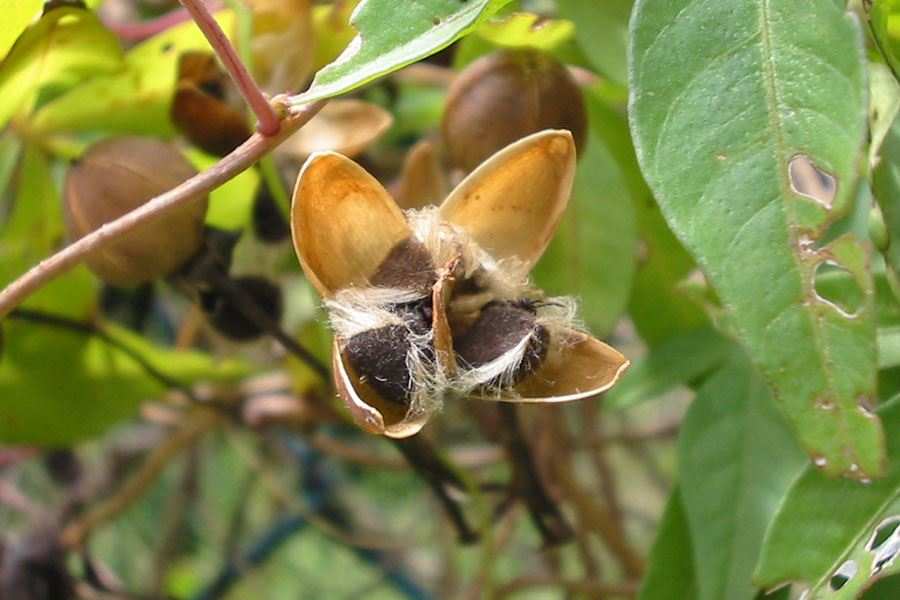Several papers published in the 1960's (see post #40 in mycotopia link above) show claviceps paspali ergot produces not only large amounts of the stimulating LSH but also a handful of other stimulating LSD like alkaloids just like the Mexican morning glory: penniclavine, agroclavine, elymoclavine, chanoclavine. As shown in post #40 in above link, these alkaloids all work together using teamwork to hit most of the same receptors LSD hits, along with 5 new ones (5 more adrenal receptors) that LSD does not even target:
Thomas S. Ray, Psychedelics and the Human Receptorome (2010):
hxxp://journals.plos.org/plosone/article?id=10.1371/journal.pone.0009019
Breadth of Receptor Binding, 4.00=max (off the charts), 0.00=min, X.XX=receptor is hit but we don't have strength data.
LSD: 5ht1a = 3.73, LSH: = 0.00, penniclavine = X.XX, DMT: = 0.00, psilocin = 2.88, mescaline = 3.61, 5-meo-DMT: = 4.00 (make up >80% of brain 5-ht)
LSD: 5ht1b = 4.00, LSH: = 0.00, penniclavine = 0.00, DMT: = 0.00, psilocin = 2.19, mescaline = 0.00, 5-meo-DMT: = 2.41
LSD: 5ht1d = 3.70, LSH: = 0.00, penniclavine = 0.00, DMT: = 3.91, psilocin = 3.40, mescaline = 0.00, 5-meo-DMT: = 3.48
LSD: 5ht1e = 2.62, LSH: = 0.00, penniclavine = 0.00, DMT: = 3.28, psilocin = 3.03, mescaline = 3.16, 5-meo-DMT: = 1.72
LSD: 5ht2a = 3.54, LSH: = X.XX, penniclavine = X.XX, DMT: = 2.58, psilocin = 2.14, mescaline = 0.00, 5-meo-DMT: = 0.98
LSD: 5ht2b = 3.11, LSH: = X.XX, penniclavine = 0.00, DMT: = 3.91, psilocin = 4.00, mescaline = 3.97, 5-meo-DMT: = 0.69 (sensual & entactogenic)
LSD: 5ht2c = 3.11, LSH: = X.XX, penniclavine = 0.00, DMT: = 3.42, psilocin = 2.52, mescaline = 0.00, 5-meo-DMT: = 1.55
LSD: 5ht5a = 3.64, LSH: = X.XX, penniclavine = 0.00, DMT: = 3.16, psilocin = 2.83, mescaline = 0.00, 5-meo-DMT: = 1.84
LSD: -5ht6 = 3.75, LSH: = X.XX, penniclavine = X.XX, DMT: = 3.35, psilocin = 2.82, mescaline = 0.00, 5-meo-DMT: = 2.73
LSD: -5ht7 = 3.77, LSH: = 0.00, penniclavine = X.XX, DMT: = 4.00, psilocin = 2.82, mescaline = 0.00, 5-meo-DMT: = 3.69 (novelty, newness)
LSD: ---D1 = 2.34, LSH: = 0.00, penniclavine = X.XX, DMT: = 3.51, psilocin = 3.37, mescaline = 0.00, 5-meo-DMT: = 2.38
LSD: -A-2A = 2.93, LSH: = X.XX, penniclavine = X.XX, DMT: = 2.75, psilocin = 1.36, mescaline = 2.92, 5-meo-DMT: = 0.00 (aesthetic/beauty adrenal a2a)
LSD: -A-2B = 0.00, LSH: = X.XX, penniclavine = 0.00, DMT: = 3.53, psilocin = 1.57, mescaline = 0.00, 5-meo-DMT: = 0.86 (aesthetic/beauty adrenal a2b)
LSD: -A-2C = 0.00, LSH: = X.XX, penniclavine = X.XX, DMT: = 3.53, psilocin = 1.03, mescaline = 4.00, 5-meo-DMT: = 1.57 (aesthetic/beauty adrenal a2c)
LSD: -A-2D = 0.00, LSH: = 0.00, penniclavine = X.XX, DMT: = 0.00, psilocin = 0.00, mescaline = 0.00, 5-meo-DMT: = 0.00 (aesthetic/beauty adrenal a2d)
LSD: -A-1A = 0.00, LSH: = X.XX, penniclavine = 0.00, DMT: = 0.00, psilocin = 0.00, mescaline = 0.00, 5-meo-DMT: = 0.00 (aesthetic/beauty adrenal a1a)
LSD: -A-1B = 0.00, LSH: = X.XX, penniclavine = 0.00, DMT: = 0.00, psilocin = 0.00, mescaline = 0.00, 5-meo-DMT: = 0.00 (aesthetic/beauty adrenal a1b)
LSD: -A-1D = 0.00, LSH: = X.XX, penniclavine = 0.00, DMT: = 0.00, psilocin = 0.00, mescaline = 0.00, 5-meo-DMT: = 0.00 (aesthetic/beauty adrenal a1d)


